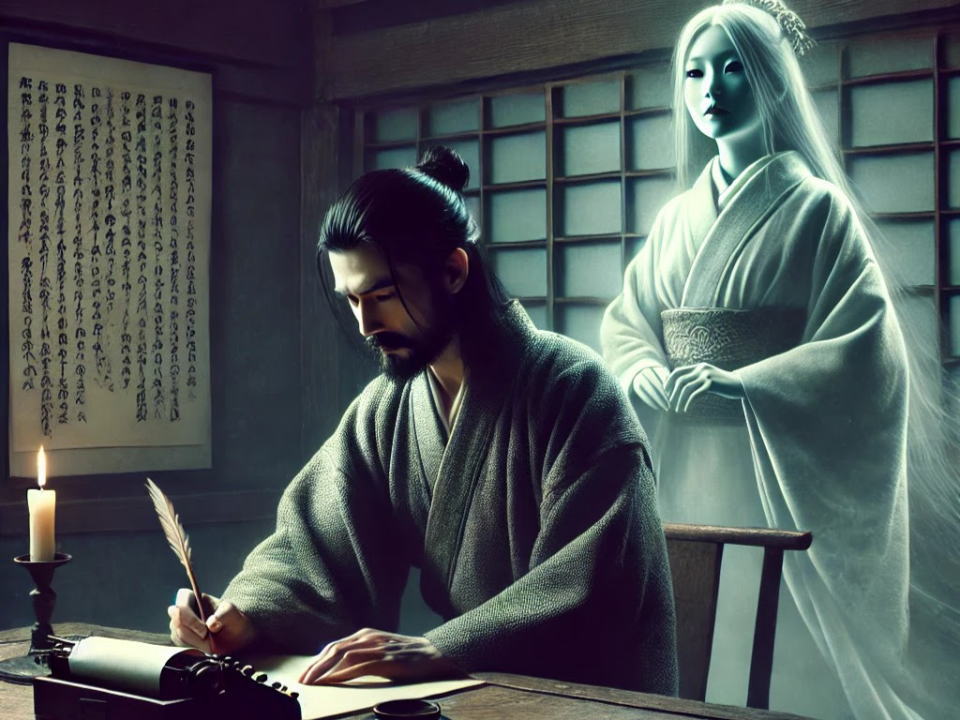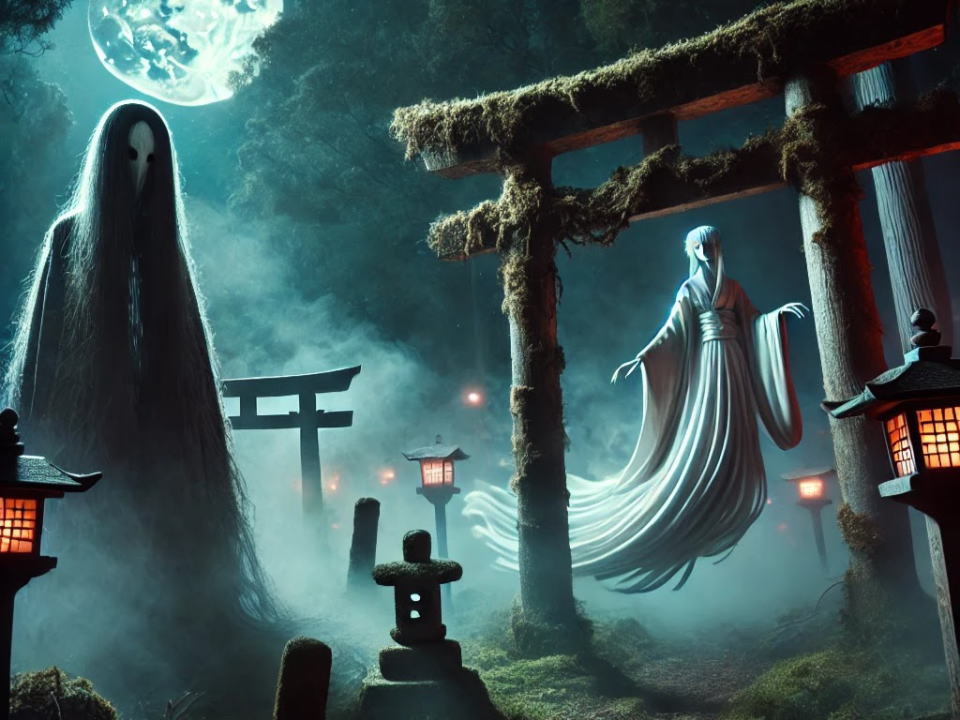
Lafcadio Hearn is known as the writer who introduced Japan’s ghost story culture to the world.
His most famous work, Kwaidan, is a collection of traditional Japanese ghost and yokai tales, still beloved by many readers today.
But why was Hearn so fascinated by ghost stories?
The answer lies in his own life experiences and his deep connection with Japan.
A Childhood Fascinated by the Supernatural
Hearn was born in 1850 on the Greek island of Lefkada.
From an early age, he was exposed to diverse cultures and grew up hearing Greek mythology and Irish folklore.
His mother was Greek, and it is said that he often listened to her tell mystical stories.
At the age of 13, Hearn lost his left eye in an accident, which permanently altered his vision.
This experience sharpened his sensitivity and may have deepened his interest in the unseen world.
Influences from His Time in America
At 19, Hearn moved to the United States, where he worked as a journalist in New Orleans.
The city was a melting pot of cultures, and he was exposed to African American spirituals and the beliefs of the Voodoo religion.
The Voodoo faith, with its strong belief in the spirits of the dead, may have helped him recognize similarities with Japanese ghost stories.
New Orleans also had strong French and Spanish cultural influences, and Hearn experienced firsthand how different traditions could blend together.
These experiences deepened his interest in supernatural phenomena and the afterlife.
Discovering Ghost Stories in Japan
In 1890, Hearn arrived in Japan and became deeply fascinated by its culture, especially its folklore and ghost stories.
His wife, Setsu Koizumi, shared old Japanese tales and ghost legends with him, which became a source of inspiration for his writing.
Hearn lived in Matsue, a city in Shimane Prefecture, which had long been home to many ghost and yokai legends.
Stories of ghostly encounters had been passed down in places like Matsue Castle and along the shores of Lake Shinji.
Hearn eagerly collected these tales and decided to introduce them to Western readers.
Using Ghost Stories to Share Japanese Culture

For Hearn, ghost stories were not just about fear—they were a way to express Japanese views on life, death, and spirituality.
He wanted to convey the unique qualities of Japanese ghost stories, such as their quiet atmosphere and lingering sense of mystery, to Western audiences.
He pointed out that Western ghost stories often build toward a clear climax of horror, while Japanese ghost stories tend to be more ambiguous, leaving readers with an eerie aftertaste.
Understanding these differences, he captured the essence of Japanese ghost stories in his writing.
The Publication and Impact of Kwaidan
In 1904, Hearn published his masterpiece, Kwaidan.
This book included famous Japanese ghost stories such as Mimi-nashi Hōichi (Hoichi the Earless) and Yuki-onna (The Snow Woman).
Thanks to Hearn’s work, these stories became well-known to Western readers.
After the book’s publication, Hearn gained worldwide recognition, and Japanese folklore began receiving international appreciation.
His stories were later adapted into films and stage performances, cementing their place as an important part of Japanese culture.
Conclusion
Lafcadio Hearn’s lifelong fascination with the supernatural was shaped by his childhood experiences and exposure to different cultures.
After arriving in Japan, he was influenced by his wife, Setsu, and the folklore of Matsue, leading him to introduce Japanese ghost stories to the world.
Through his works, the unique world of Japanese ghosts and yokai continues to captivate readers across the globe.
For Hearn, Japanese ghost stories were more than just tales of terror—they were profound reflections of Japanese spirituality and values.
His legacy ensures that these haunting yet beautiful stories will continue to be passed down for generations.
References
https://www.hearn-museum-matsue.jp/ (Lafcadio Hearn Memorial Museum)
https://www.kankou-matsue.jp/ (Matsue City Official Tourism Site)
https://www.jnto.go.jp/ (Japan Government Tourism Site)
